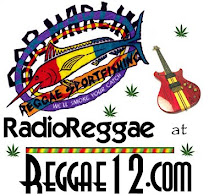Part Two: SKA ROCKSTEADY REGGAE
Ska's large brass ensembles gave way to smaller groups and the debt to American Soul music became greater as Ska morphed into Rocksteady. Vocals came to the fore, and the tempo slowed; perhaps, as local folklore says, because the especially hot summer of 1966 led dancers to call for slower songs. Sam Cooke and Curtis Mayfield's Impressions were almost godlike in their influence. Many younger artists, like Bob Marley, Jimmy Cliff, and Toots Hibbert, made their first recordings during the Ska era, but only came into their own with Rocksteady.
Rocksteady was over almost before it began, but its artistic flowering produced many great records in a compressed time span. By 1968, Rocksteady was giving way to Reggae, but pinpointing the first Reggae record is no easier than pinpointing the first Ska or Rocksteady record. Unlike its predecessors, Reggae owed little to Fats Domino, the Impressions, or any American music. It was the heartbeat of an island just seventeen degrees from the equator, and it was the sound of country come to town. "Ivan Martin," played by Jimmy Cliff in the film The Harder They Come, was. the quintessential country boy adrift in Kingston 's mean streets. "Until Reggae," said producer lee Perry, who was himself from the country, "it was all Kingston , Kingston , Kingston . Then the country people come to town and they bring the earth, the trees, the mountains. That's when Reggae music come back to the earth."
Rocksteady, like Soul music, had the commercial discipline of white pop music, but Reggae rejected that discipline, and its retrieval of the Africanness in Afro-Caribbean music went hand-inhand with the rise of Rastafari. The Burrus, who'd lived communally in Jamaica since slavery and held fast to their African roots, shared housing in the low-rent west Kingston district of Dungle with the Rastafarians, who believed that a black king would be crowned in Africa and lead the lost tribes out of Babylon . The music, the beliefs, and the dress of the Rastas influenced the sound, the spiritual agenda, and the look of Reggae.
The music played out against a disintegrating social backdrop. Jamaica had become independent from Great Britain in 1962, but, as the promise of Independence faded, Reggae became politicized and angry. By the time this set closes in 1975, the music was past making compromises with the tourist trade and long past hoping to get on American radio.
The Trojan Records collection "Dawning of a New Era" chronicles a time during the late 60's when Ska, Rock Steady and Reggae were all blending and evolving, drawing in new fans worldwide. The 2-disc set pulls together prime records from 1968-69, a period when Skinheads were still largely an underground youth movement and not a violent newspaper headline.
The great thing about this set of tracks is you don't get stuck with more copies of Desmond Dekker's hits but rather, you get rare and in demand records. Many of the tracks on this set have never been issued since their original small pressings nearly thirty-five years ago. And with artists of the caliber of Rico Rodriquez, Lloyd Charmers, The Tennors, Lester Sterling, the Ethiopians and Tommy McCook featured, this collection is a great addition to your collection if you like Ska and the Skinhead sound.
The Skinheads were a youth movement that sprang up from the working class youth in Britain. They were seasoned with some angst that came from tough neighborhoods and they choose the Ska beat and Reggae sounds coming out of the West Indies and Black neighborhoods as their own. The beat suited their aggressive and sometimes angry attitude and here are the roots of bands like The Clash and punk rock. The Skinhead interest in Reggae in particular pushed the music into the awareness of the public at large and helped many Reggae artists break into the Pop charts in England. The Skinhead Movement only lasted about four years but it was an important key to mainstream success for Reggae Music.
Much of this "history" is included in the notes for "This is Reggae Music: The Golden Era 1960-1975" - a four CD set that provides a great musical overview of the genre - the selections and sound quality are excellent through out - a vital Ras John Reggae.com Pick! From the booklet included with the four CD box set, "This Is Reggae Music: The Golden Era" (http://www.amazon.com/dp/B00064LOV4?tag=sistamaureesrast&camp=14573&creative=327641&linkCode=as1&creativeASIN=B00064LOV4&adid=1PDH24Y48547AAWJJB4H&)
Wednesday, March 17, 2010
SKA ROCKSTEADY REGGAE: History of REGGAE Music Pt 3
Labels:
curtis mayfield,
jamaica,
jimmy cliff,
lee perry,
music,
rastafari,
reggae,
rocksteady,
sam cooke,
ska
Subscribe to:
Post Comments (Atom)


No comments:
Post a Comment